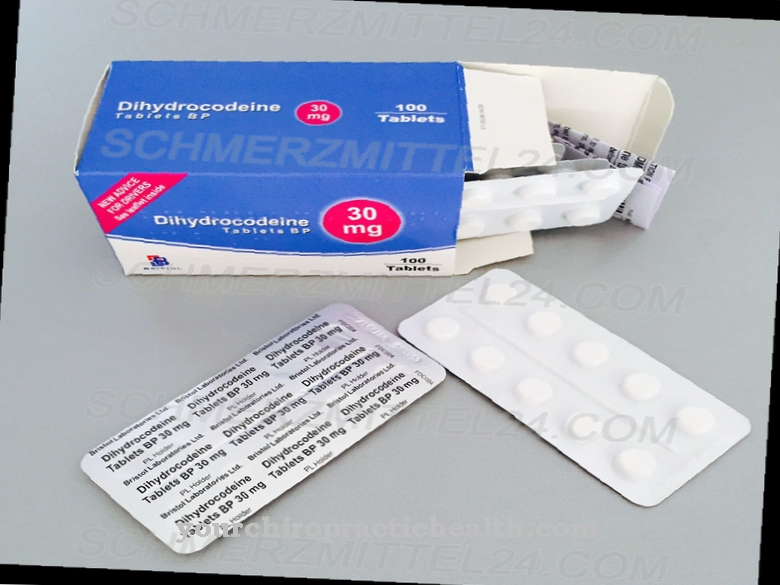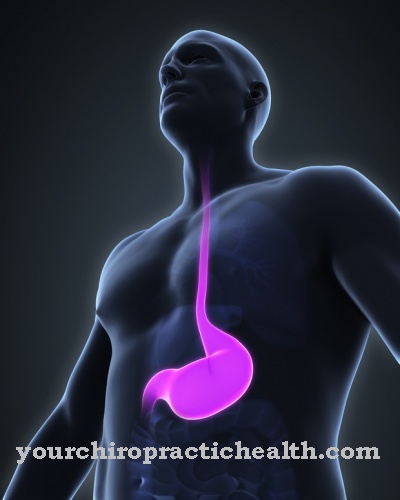The active substance Metoprolol is used for the therapy of heart diseases and high blood pressure. The remedy can also be used to prevent migraines.
What is metoprolol?

Metoprolol belongs to the group of drugs called beta blockers. It is suitable for the treatment of coronary heart disease, tachycardiac arrhythmias and arterial hypertension (high blood pressure).
Metoprolol was marketed in the United States of America from 1978. Based on further patent claims, the drug was developed as a succinate. Its approval in the USA took place in 1992. Metoprolol is now also available as an inexpensive generic.
Metoprolol has the advantage of being well tolerated. However, an overdose of the agent should not be used, as this can result in pronounced side effects. Due to its prescription requirement, Metoprolol can only be obtained from the pharmacy upon presentation of a prescription.
Pharmacological effect
In the event of stress, the human organism releases the hormone adrenaline into the blood. Adrenaline is a stress hormone that reaches all organs after a short time. By docking with beta adrenergic receptors, the hormone is able to emit stress signals. This has the consequence that the respective organs adapt to the stressful situation. In addition, the bronchi widen, which means that more oxygen is absorbed. Other processes are the reduction of the digestive function, increased blood flow and a faster heartbeat. In this way, the human body receives more energy and oxygen.
However, deviations in the system are sometimes also possible. The heart then beats faster, although it has not received a signal to do so. As a result, the organism is put under considerable strain, which in turn can lead to damage to the blood vessels, the formation of blood clots and cardiac arrhythmias.
This is where the use of metoprolol comes in. The active substance selectively blocks the adrenaline receptors located in the heart. In this way, the drug counteracts the docking of adrenaline so that it is no longer able to develop its effect. So it stays with a normal heartbeat.
When metoprolol is taken orally, the active ingredient is almost completely absorbed into the intestine. Before reaching the site of action, however, the drug is largely broken down by the liver. Due to the rapid excretion of metoprolol via the kidneys within 3.5 hours, prolonged-release tablets are usually administered, which means that the drug can be released with a delay. The active substance level within the organism thus achieves the same continuity over about 24 hours.
Medical application & use
The main areas of application for metoprolol are high blood pressure and cardiovascular diseases. The beta blocker is also suitable for the therapy of heart diseases that are associated with cardiac insufficiency. This includes, for example, stable angina pectoris that does not cause any symptoms.
The indications for metoprolol also include cardiac arrhythmias associated with a heartbeat that is too fast. By slowing down the heartbeat, the drug has a positive influence on the disorders. To relieve the heart, metoprolol can also be administered in the treatment of an acute heart attack. After a heart attack, the beta blocker is used to prevent further complaints. This will reduce the risk of sudden cardiac death.
Metoprolol is not only used to treat heart disease, but can also be used to prevent migraine attacks. If the medicine is taken at regular intervals, the extent and frequency of migraine attacks can be reduced.
Metoprolol is used as a salt with succinic acid (succinate), fumaric acid (fumarate) or tartaric acid (tartrate). The drug is usually administered as a prolonged release tablet, from which the active ingredient is released with a delay. Other forms of administration are conventional tablets and injections. Metoprolol can also be administered as a combination agent with calcium channel blockers or diuretics. The prolonged-release tablets have the advantage that they only need to be taken once a day. For this purpose, the optimal dose of the active ingredient is determined by the doctor.
If metoprolol is to be discontinued again, the dose must be reduced step by step in order to avoid the undesired rebound phenomenon. After the drug is suddenly stopped, there is a reflex rise in blood pressure.
Risks & side effects
About one to ten in 100 people experience side effects after taking metoprolol. These primarily include dizziness after getting up, tiredness, slow heartbeat, headache, nausea, vomiting and breathing problems after physical exertion.
Other possible side effects can be cardiac arrhythmias, circulatory disorders with loss of consciousness, worsening of cardiac insufficiency, general malaise, lethargy, insomnia, constipation, diarrhea, flatulence, tingling on the skin, feeling of cold in the limbs, allergic skin reactions, states of exhaustion and confusion. Even depression, nightmares, or hallucinations are possible.
If there is hypersensitivity to metoprolol or other beta blockers, the patient must refrain from taking the drug. The same applies to cardiogenic shock, inadequately treated cardiac insufficiency, conduction disorders to the heart, low blood pressure, circulatory disorders due to Raynaud's syndrome or peripheral arterial occlusive disease, diseases of the adrenal medulla, pronounced asthma or disorders of the acid-base balance.
You should also watch out for interactions with other drugs.The antihypertensive effect is considerably increased by the simultaneous use of metoprolol and other antihypertensive preparations. These include a. Calcium channel blockers of the nifedipine type, ACE inhibitors, active substances that dilate blood vessels such as hydralazine or dihydralazine and diuretics (water tablets).














.jpg)













